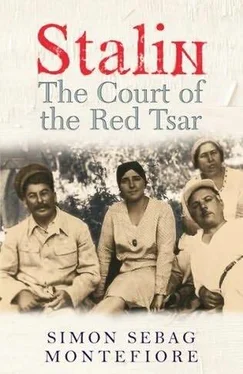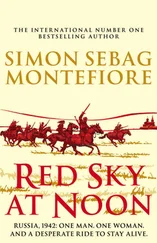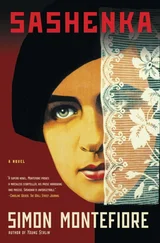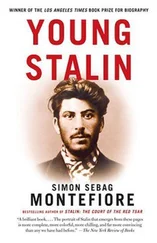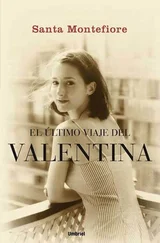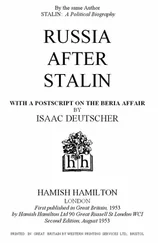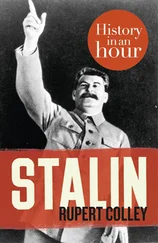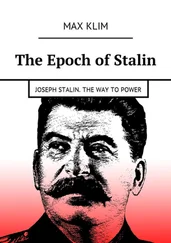“Let them go to the dacha,” Nadya replied, adding cheerfully, “I’ll soon graduate from the Academy and then there’ll be a real holiday for everyone!” She winced. “Oh! My headache!” Stalin, Voroshilov and others were carousing in the little room behind the Mausoleum where there was always a buffet.
Next morning the boys were driven off to Zubalovo. Stalin worked as usual in his office, meeting Molotov, Kuibyshev and CC Secretary Pavel Postyshev. Yagoda showed them the transcripts of another anti-Stalin meeting of the Old Bolsheviks, Smirnov and Eismont, one of whom had said, “Don’t tell me there’s nobody in this whole country capable of removing him.” They ordered their arrest, then they walked over to the Voroshilovs’ for dinner. Nadya too was on her way there. She looked her best. 8
Some time in the early hours, Nadya took the Mauser pistol that her brother Pavel had given her and lay on the bed in her room. Suicide was a Bolshevik death: she had attended the funeral of Adolf Yoffe, the Trotskyite who protested against Stalin’s defeat of the oppositions by shooting himself in 1929. In 1930, the Modernist poet Mayakovsky also made that supreme protest. She raised the pistol to her breast and pulled the trigger once. No one heard the voice of that tiny feminine weapon; Kremlin walls are thick. Her body rolled off the bed onto the floor. 9
Part Two
THE JOLLY FELLOWS
Stalin and Kirov
1932–1934
Nadya died instantly. Hours later, Stalin stood in the dining room absorbing the news. He asked his sister-in-law Zhenya Alliluyeva “what was missing in him.” The family were shocked when he threatened suicide, something they “had never heard before.” He grieved in his room for days: Zhenya and Pavel decided to stay with him to make sure he did not harm himself. He could not understand why it had happened, raging what did it mean? Why had such a terrible stab in the back been dealt to him of all people? “He was too intelligent not to know that people always commit suicide in order to punish someone…” wrote his daughter Svetlana, so he kept asking whether it was true he had been inconsiderate, hadn’t he loved her? “I was a bad husband,” he confessed to Molotov. “I had no time to take her to the cinema.” He told Vlasik, “She’s completely overturned my life!” He stared sadly at Pavel, growling, “That was a hell of a nice present you gave her! A pistol!”
Around 1 p.m., Professor Kushner and a colleague examined the body of Nadezhda Stalin in her little bedroom. “The position of the body,” the professor scrawled on a piece of squared paper ripped from one of the children’s exercise books, “was that her head is on the pillow turned to the right side. Near the pillow on the bed is a little gun.” The housekeeper must have replaced the gun on the bed. “The face is absolutely tranquil, the eyes semi-closed, semi-open. On the right part of face and neck, there are blue and red marks and blood…” There were bruises on her face: did Stalin really have something to hide? Had he returned to the apartment, quarrelled with her, hit her and then shot her? Given his murderous pedigree, one more death is not impossible. Yet the bruise could have been caused by falling off the bed. No one with any knowledge of that night has ever suggested that Stalin killed her. But he was certainly aware that his enemies would whisper that he had.
“There is a five-millimetre hole over the heart—an open hole,” noted the Professor. “Conclusion—death was immediate from an open wound to the heart.” This scrap of paper, which one can now see in the State Archive, was not to be seen again for six decades.
Molotov, Kaganovich and Sergo came and went, deciding what to do: as usual in such moments, the Bolshevik instinct was to lie and cover up, even though in this case if they had been more open, they might have avoided the most damaging slanders. It was clear enough that Nadya had committed suicide but Molotov, Kaganovich and her godfather Yenukidze got Stalin’s agreement that this self-destruction could not be announced publicly. It would be taken as a political protest. They would announce she had died of appendicitis. The doctors, a profession whose Hippocratic oath was to be as undermined by the Bolsheviks as by the Nazis, signed the lie. Servants were informed that Stalin had been at his dacha with Molotov and Kalinin—but unsurprisingly, they gossiped dangerously.
Yenukidze drafted the announcement of her death and then wrote a letter of condolence, to be published next day in Pravda , signed by all the leaders’ wives and then the leaders themselves, starting with Nadya’s four greatest friends—Ekaterina Voroshilova, Polina Molotova, Dora Khazan and Maria Kaganovich: “Our close friend, a person with a wonderful soul… young, vigorous and devoted to the Bolshevik Party and the Revolution.” Even this death was seen by these singular dogmatists in terms of Bolshevism. 1
Since Stalin was barely functioning, Yenukidze and the magnates debated how to arrange this unique funeral. The Bolshevik funeral ritual combined elements of Tsarist funeral tradition with its own idiosyncratic culture. The deceased were beautified by the finest morticians, usually the professors in charge of Lenin’s cadaver, then lay in state, snowy faces often heavily rouged, among the surreal mise-en-scène of lush tropical palms, bouquets, red banners, all unnaturally illuminated with arc lights. The Politburo bore the open coffin to, and from, the Hall of Columns where they also stood guard like knights of old. The rigorous eminence was then cremated and a plangent military funeral was held, with the Politburo again bearing an elaborate catafalque enclosing the urn of ashes which they placed in the Kremlin Wall. But Stalin himself must have demanded an old-fashioned funeral.
Yenukidze presided over the Funeral Commission with Dora Khazan, Andreyev’s wife, and Pauker, the Chekist who was so close to Stalin. They met first thing next morning and decided on the procession, the place of burial, the guard of honour. Pauker, the theatrical expert—ex-coiffeur of the Budapest Opera—was in charge of the orchestras: there were to be two, a military one and a theatrical one of fifty instruments. 2
Stalin could not speak himself. He asked Kaganovich, the Politburo’s best speaker, to give the oration. Even that energetic bulldozer of a man, fresh from shooting droves of innocent Kuban Cossacks, was daunted by the burden of giving such a speech in front of Stalin himself, but as with so many other macabre chores, “Stalin asked and I did it.” 3
The death of Nadya from appendicitis was broken to the children out at Zubalovo: Artyom was distraught but Vasily never recovered. Svetlana, six, did not grasp this finality. Voroshilov, who was so kind in all matters outside politics, visited her but could not talk for weeping. The older children were driven to Moscow. Svetlana remained in the country until the funeral.
When the body was removed from the apartment, some time on the morning of the 10th, a little girl in the Horse Guards, opposite Stalin’s Poteshny Palace, sat glued to the window of her apartment. Natalya Andreyeva, daughter of Andreyev and Dora Khazan who was managing the funeral with Yenukidze, watched as a group of men carried down the coffin. Stalin walked beside it, wearing no gloves in the freezing cold, clutching at the side of the coffin with tears running down his cheeks. 4The body must have been taken to the Kremlevka to cover up the bruises.
The schoolboys, Vasily Stalin and Artyom, arrived at Stalin’s flat where Pavel, Zhenya and Nadya’s sister Anna, took turns watching over the widower who remained in his room and would not come out for dinner. The gloomy apartment was pervaded by whispers: Artyom’s mother arrived and foolishly told her son the spellbinding truth about the suicide. Artyom rashly asked the housekeeper about it. Both he and his mother were reprimanded. “The things I saw in that house!” recalls Artyom.
Читать дальше
